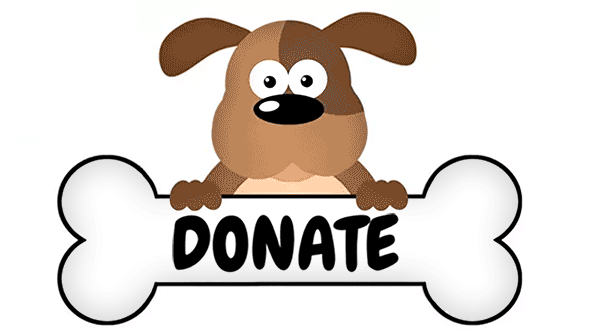Walking Your Dog
The first thing you should know is that there is a difference between loose-leash walking and heel. You need heel in tight areas. But for the most part, on your daily walks, you only need your dog not to pull. It’s your dog’s walk. Let him sniff, stop, be curious. He can tell a lot about what’s been happening out there by using his senses – kind of like you reading the newspaper. The instructions below are for loose-leash walking, not heel.
No-Pull Harnesses
First, you can try a no-pull harness (with the ring on the front or, in some cases, on the front and back), but make sure it’s fitted properly. Franchise pet stores seem to fit them too large. We have Sense-ation and Freedom harnesses for sale at a good price, if you’re interested, but you would need to make arrangements to bring your dog in. Keep in mind, also, that these are tools to be used while teaching your dog to walk politely, rather than something that you should need to use forever.
Holding Your Leash
Every instructor teaches slightly different ways to hold a leash, but this is one effective way to do it. Put your hand palm up in the loop with your thumb outside; then, grab the leash farther down, without making it too tight. A tight leash tells your dog that there’s something to be anxious about, and it doesn’t teach him anything. At the same time, hold your leash hand steady against your belly and keep it there. If you have a very strong dog, you may need to hold both hands on the leash at your belly. Your elbow(s) will automatically rest comfortably on your side(s). Put knots in your leash, so you have something to grasp and to ensure that the amount of leash is consistent. Holding your leash this way will give you much greater stability, so you won’t be pulled off your feet, and your dog will know how much leash he has when walking.
In contrast, if your arm is out and the leash is moving all over the place, you aren’t stable, and your dog never knows where you are. Or if you hold your leash around your wrist, you could break your wrist when your dog takes off. I don’t recommend having your second hand hold the leash separately; you will tend to move that hand around and to yank instinctively when your dog pulls.
Options for Leash Walking
- Unless your dog is so strong that you just can’t do it, freeze when he pulls, so that he can’t get anywhere. Wait and when he comes back to you, give him a great reward (maybe use small pieces of hot dogs or chicken or even baby food right from the jar). If your dog doesn’t come back on his own, make a noise that will get his attention or say his name to get him back to you. He will have the choice of either pulling and getting nowhere or sticking around you and getting a reward. Then, when your dog is walking with you, periodically give him treats to reinforce his good behavior. Don’t worry, you won’t have to do this forever, but it will make the association that walking with you, rather than pulling, is a good thing. For smaller dogs, you can hold a wooden spoon with peanut butter on it, so that you don’t have to bend over to give your dog a treat. Or you can use a “click stick” or “target stick”(discussed below).
- Another approach is to teach your dog targeting. Start with your palm to the side or two fingers out (it’s taught both ways) right in front of your dog’s nose. Dogs are curious enough that they will touch your hand when it suddenly appears. When he does, click and treat. YOU ARE NOT PUTTING FOOD IN THE HAND HE TOUCHES. THE REWARD COMES FROM YOUR OTHER HAND AFTER HE TOUCHES. If you don’t like clickers, you can say “YES”, but do it the instant your dog’s nose touches your hand. If your dog doesn’t do it, don’t follow him around with your hand; just put your hand behind your back and try again. When your dog will reliably touch your hand, add the word, “Touch”. Gradually, you will be able to move your hand farther away and he will move to touch your hand; just don’t go too fast. Once he learns targeting, you can use it for walking, recalls … even doggie dancing. It’s probably not a good idea to keep your hand down the entire time you’re walking, but you can use it to get your dog back in line. For smaller dogs, there are “click sticks” or “target sticks” that are long enough to reach your dog, but are also retractable. You would teach your dog to touch the end, instead of touching your hand.
- Here’s a third method that can work. As you walk, drop a treat where you want your dog to walk (generally a little ahead and on your left). This will slow down your dog and show him that near you is a great place to be. Then, instead of every step, make it every second or third step. As your dog gets the idea, you can make dropping a treat more random – 3 steps, 7 steps, 5 steps, 2 steps, etc. Periodically, give your dog a release word (you pick the word, but make it consistent), and let him go sniff and be a dog. When you’re ready to walk together again, give him a cue like “let’s go”.
Yanking Your Dog
Please don’t yank your dog back when you’re out walking.
- Yanking your dog back can teach your dog that the thing dog/child/stranger he is being yanked away from is scary. This can lead to leash aggression toward the dog/child/stranger as a way of keeping “that scary thing” away.
- Yanking your dog back actually makes your dog pull harder in the opposite direction.
- Yanking doesn’t teach your dog what you want him to do.
- Yanking your dog back isn’t fair, especially to reactive dogs. Reactive dogs are almost always scared, and their aggression is a way to keep what they’re scared of away. You are punishing your dog for an emotion that he wishes he didn’t feel as well. And if your dog is wearing a choke, prong or electronic collar (NO! NO!), you are also causing pain.
More Tips
Try not to walk directly at another dog. In the doggy world, this behavior is considered rude, or even a threat. However, we put our dogs in this position all the time. There is no rule that you have to walk on sidewalks, streets or paths. If there’s an open area, walk there and save your dog the indignity of being challenged.
Be unpredictable. When you’re out on walks, change your pace and direction. Start walking slowly, speed up, rotate in another direction, then another. If your dog doesn’t know what his crazy person will do next, his attention will be on you, instead of “out there”.
Key Points to Remember
- Dogs need to be in “heel” position only when in tight spaces (hallways, around construction work…) or when another dog or stranger is approaching. Loose leash walking is all that your dog needs most of the time, including on walks. Let your dog walk ahead, as long as he isn’t pulling. If your dog is allowed to take some time to “be a dog” and sniff the world, he will be more satisfied and tired after each walk.
- Consider having your dog fitted for a no-pull harness. These harnesses will make it easier to teach your dog to walk on a loose leash. In addition, they don’t cause pain or unintended consequences, unlike choke, prong, or electronic collars.
- Hold your dog’s leash in your hand, not on your wrist, and keep your arm locked against your body, instead of flailing around. This position makes you more stable, and lets your dog know where you are. Put knots in your leash, so that you are always moving the same distance on the leash and your hand doesn’t slip.
- Before you can expect your dog to stop pulling, YOU must stop pulling. When you yank and pull on your dog’s leash, you are teaching your dog to pull harder in the opposite direction. Instead, move backwards at a brisk, happy pace, and your dog will follow.
- There are several ways to teach your dog to walk on a loose leash. Use whichever is the easiest for you and your dog:
- Play the red-light green-light game. When your dog pulls, you freeze. When your dog stops pulling for ANY reason, you GO! The reward for a loose leash is walking!
- Teach your dog to target (touch) your hand and use targeting to get your dog to pay attention to you. A dog that loves targeting will stay behind your hand.
- Drop treats on the ground slightly ahead of your dog to slow him down and to make where you want him to be rewarding.
- Be unpredictable. Vary your pace (speeding up and slowing down), rotate, change directions, and even practice skills and tricks. Your dog will pay more attention to you, and both of you will have more fun!
- Avoid walking directly toward another dog. Dogs don’t like other dogs in their space, and some dogs will react aggressively to what they see as a threat. Whenever possible, walk in a field, cross the street, or walk around the other dog in an arc, instead of creating an uncomfortable and challenging situation.
- Remember to REWARD your dog randomly when he just happens to be walking nicely on leash. Your dog will start checking in on you more often.
For tips on walking a reactive dog, read our handout on dog-reactive dogs. For ideas when walking a dog that chases squirrels, joggers, bikes, etc, see our write-up on Dogs That Chase.
Resources
The Whole Dog Journal has an e-book called “Walking Your Dog” that is about 25 pages with illustrations. Go to http://www.whole-dog-journal.com/ebooks/-20583-1.html
MY DOG PULLS – WHAT DO I DO? by Turid Rugaas
If you order your books, DVD’s, or other items from the Amazon or Dogwise icons on our website, www.yourdogsfriend.org, Your Dog’s Friend will receive a percentage of whatever you buy as a donation.
Your Dog’s Friend is a 501-c3 non-profit organization that educates and supports dog parents. We offer behavior and training advice; sponsor FREE workshops on a variety of topics; run positive dog training, behavior-related, and sports classes; refer dog parents to trainers, dog walkers, and other professionals; and send an e-newsletter with articles, resources, and announcements.
This material is not intended to be a substitute for professional help when dealing with dogs with intense or potentially dangerous behavior issues. Consider consulting a positive reinforcement trainer or animal behaviorist for situations that you feel are dangerous or that you don’t feel equipped to handle. A list of recommended trainers and behaviorists can be found on our website, www.yourdogsfriend.org.




